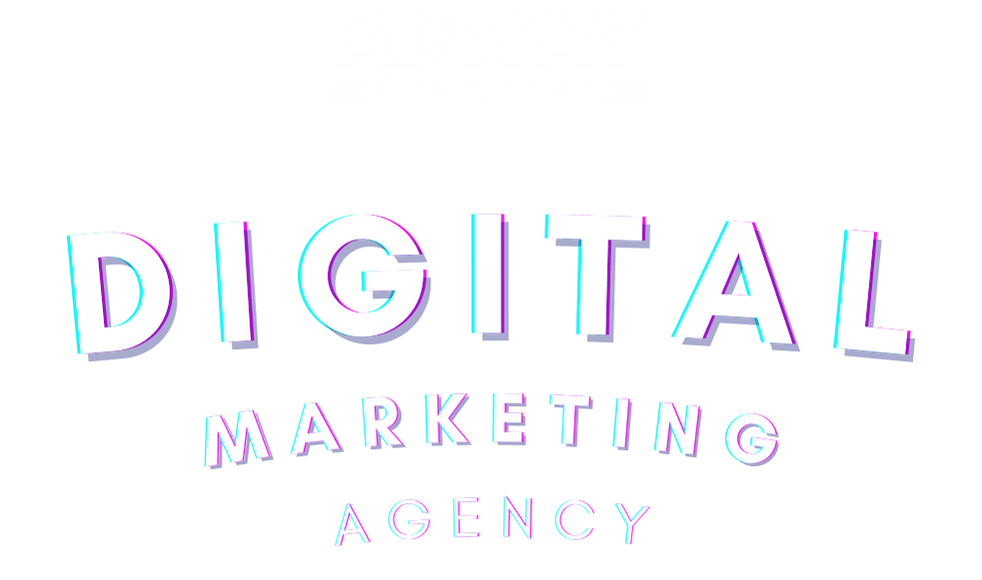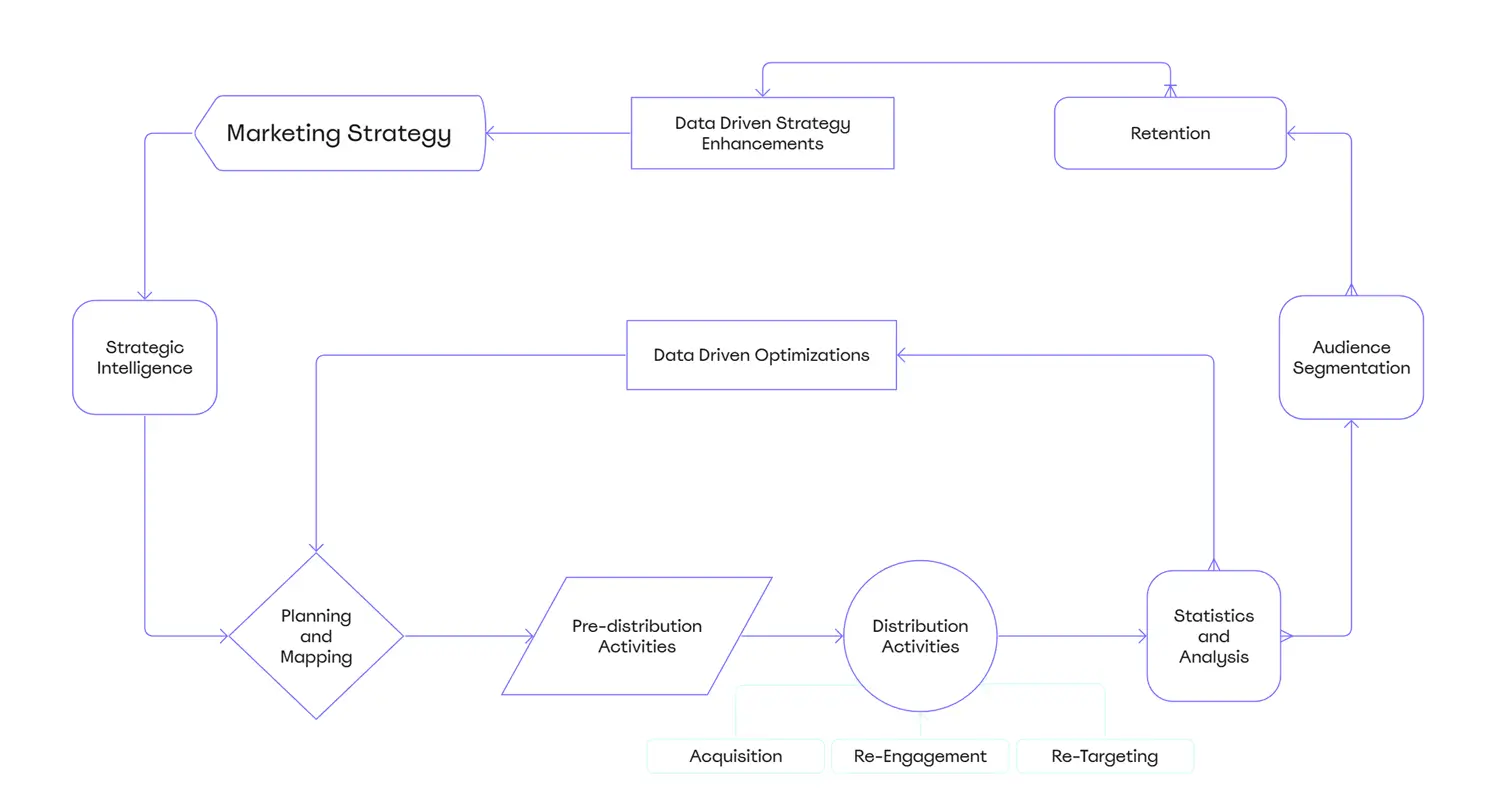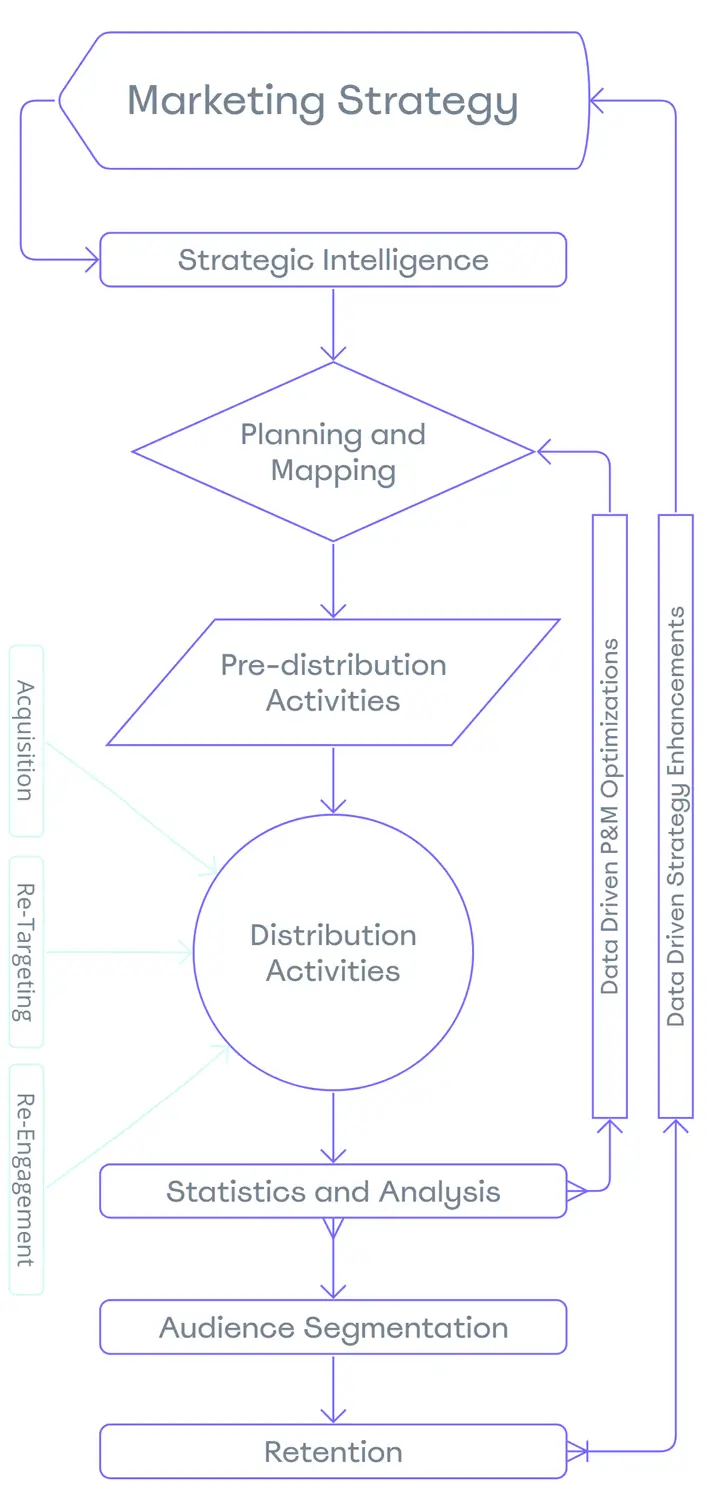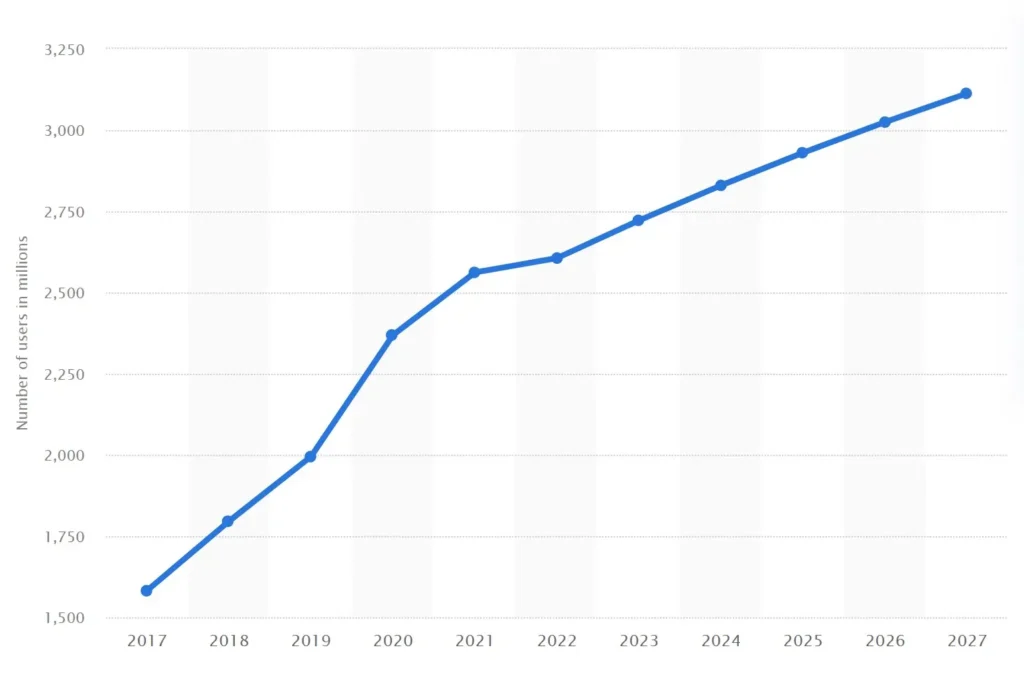
Your Unique Path to Digital Success
How we tailor our solutions to your specific challenges

A marketing strategy maintains your company's focus and ensures it keeps its direction.
The strategy includes a SWOT analysis of your brand, end goals and how they will be measured, your brand stance, the relevant marketing efforts and tactics, and additional and valuable pieces from the marketing puzzle.
The strategy needs to be flexible and adapt if and when necessary.
The effectiveness of a marketing plan depends on the presence of accurate and complete pieces of relevant marketing data.
Collecting this data is the underlying driver of marketing intelligence.
Without it, it's nearly impossible to determine your target audience's needs and wants, find out how they will discover your solution, or gain vital insights about your competition.
Once the exact focus, purpose, and necessary data are defined, it's time to develop a marketing plan outlining the marketing initiatives.
Next, all the pieces need to be integrated into a marketing process map, which will unify them into a comprehensive and organized structure capable of achieving your brand goals.
We can call it a roadmap that defines the direction to success.
The pre-distribution activities are essential for the successful launch of the marketing campaign.
The allocation of the necessary time to produce all required by the marketing plan and map components will ensure a properly coordinated and well-thought-out launch.
(Your plan could involve website development, video production, content writing, automation solutions, etc.)
It's time to get your message delivered.
The decision on which channels will be used, and most importantly, how they will be used, will depend on the already designed marketing process map.
Our approach uses industry-leading analytical and performance optimization tools to enhance existing capabilities across Meta, LinkedIn, Google, and other platforms.
Audience reaction to the promoted product/service is paramount in marketing.
To understand more about your audience (what they think, would prefer your product/service, etc.), the statistical data and its analysis become the key.
This insight lets us improve your marketing plan and process map by implementing data-based readjustments.
The data from the statistics empowers us to quickly and effectively improve the marketing plan and process map quality.
Then, we implement the required data-driven changes to improve performance further.
Failing to take the time to understand your audience means risking creating a product or service that isn't relevant to them and won't keep their attention.
The key to running a successful business lies in truly understanding your audience.
You can develop a product or service that meets their expectations by segmenting that audience into different groups and figuring out their specific needs.
"But if we execute the segmentation process on demand and correctly, should we continue to develop and improve our strategy to make our customers stay with us?"
Retention is important because attracting new customers costs much more than retaining current ones.
It can cost up to six times as much.
Every insight directly based on data acquired from actual customers in statistics, analytics, segmentation, responses, actions, and more is important.
It can transform the company's marketing strategy towards a new and better direction.

A marketing strategy maintains your company's focus and ensures it keeps its direction.
The strategy includes a SWOT analysis of your brand, end goals and how they will be measured, your brand stance, the relevant marketing efforts and tactics, and additional and valuable pieces from the marketing puzzle.
The strategy needs to be flexible and adapt if and when necessary.
The effectiveness of a marketing plan depends on the presence of accurate and complete pieces of relevant marketing data.
Collecting this data is the underlying driver of marketing intelligence.
Once the exact focus, purpose, and necessary data are defined, it's time to develop a marketing plan outlining the marketing initiatives.
Next, all the pieces need to be integrated into a marketing process map, which will unify them into a comprehensive and organized structure capable of achieving your brand goals.
The pre-distribution activities are essential for the successful launch of the marketing campaign.
(Your plan could involve website development, video production, content writing, automation solutions, etc.)
It's time to get your message delivered.
The decision on which channels will be used, and most importantly, how they will be used, will depend on the already designed marketing process map.
Audience reaction to the promoted product/service is paramount in marketing.
To understand more about your audience (what they think, would prefer your product/service, etc.), the statistical data and its analysis become the key.
The data from the statistics empowers us to quickly and effectively improve the marketing plan and process map quality.
The key to running a successful business lies in truly understanding your audience.
You can develop a product or service that meets their expectations by segmenting that audience into different groups and figuring out their specific needs.
"But if we execute the segmentation process on demand and correctly, should we continue to develop and improve our strategy to make our customers stay with us?"
Retention is important because attracting new customers costs much more than retaining current ones.
It can cost up to six times as much.
Every insight directly based on data acquired from actual customers in statistics, analytics, segmentation, responses, actions, and more is important.
It can transform the company's marketing strategy towards a new and better direction.
Why Our Approach Works for You
We focus on your specific business challenges, not one-size-fits-all solutions
Our process evolves with your business, ensuring long-term relevance
We measure success by your growth, not our services
1. MARKETING STRATEGY
Kickstart your success by addressing your unique business challenges with a customized marketing strategy. This foundational step ensures your business objectives remain in focus throughout our partnership.
As noted by Hawkins (2001), a solid digital marketing strategy entails finding the right blend of tactics to captivate your target audience and drive up sales.[1]
It’s the foundation upon which we build, providing direction, setting goals, and charting the path for all subsequent marketing endeavors.
2. STRATEGIC INTELLIGENCE
We dive deep into your market, collecting crucial data about your target audience, competitors, and industry trends. This information forms the backbone of an effective, data-driven marketing approach.
Adrian Micu and Nicoleta Cristache emphasize that strategic intelligence equips businesses with deep insights into their audience, enabling them to spot trends, refine strategies, assess competitors, and base decisions on solid data.[2]
This step lays the groundwork for informed decision-making throughout the process.
3. PLANNING AND MAPPING
With clear goals and valuable insights, we craft a detailed plan tailored to your needs. This roadmap will guide our efforts to achieve your specific marketing objectives.
Paul F. Anderson explain that this plan serves as a blueprint, detailing how businesses leverage digital channels, platforms, and technologies to achieve their marketing objectives.[3]
It’s the glue that binds all components into a cohesive structure, primed for achieving your brand’s aspirations.
4. PRE-DISTRIBUTION ACTIVITIES
We lay the groundwork for your success by developing essential elements like your website, content, and automation tools. These pivotal tasks set the stage for a high-impact campaign launch.
As Parinaz Khazaee stress, meticulous planning and preparation of the marketing components lay the groundwork for digital marketing triumphs.[4]
Investing ample time and resources in this phase sets the stage for a seamless and impactful launch.
5. DISTRIBUTION ACTIVITIES
Your carefully crafted marketing message is disseminated through optimal channels, as outlined in your customized roadmap, ensuring it reaches and resonates with your target audience.
According to Aaron Agius, effective distribution in digital marketing entails selecting the right channels and optimizing campaigns for maximum audience reach.[5]
This step is instrumental in delivering your message to the intended audience and maximizing engagement and outreach.
6. STATISTIC AND ANALYSIS
We gather and analyze key data to understand how your audience responds to your offerings, providing clear insights into your campaign’s effectiveness.
As Daniel Martin assert, statistical analysis in digital marketing enables precise measurement of campaign effectiveness, empowering businesses to track key performance indicators (KPIs).[6]
This phase is crucial for garnering insights, making data-driven marketing improvements, and fine-tuning your marketing strategy.
7. DATA-DRIVEN OPTIMIZATIONS
Using data-driven insights, we swiftly optimize your marketing strategy, ensuring it evolves with your business needs and market dynamics.
According to Mark Koester, data-driven optimizations in digital marketing utilize analytics, experimentation, and performance analysis to make informed decisions regarding budgets, channels, content, and optimization strategies.[7]
This iterative process ensures that your marketing endeavors remain agile and responsive to evolving audience preferences.
8. AUDIENCE SEGMENTATION
We segment your audience based on their unique characteristics and needs, allowing for more personalized and effective marketing efforts.
As Anete Jodzevica explain, audience segmentation in digital marketing unveils demographics, preferences, pain points, and behaviors, facilitating highly targeted and personalized campaigns.[8]
This step is pivotal for tailoring products, services, and marketing messages that resonate with each segment.
9. CUSTOMER RETENTION
We focus on retaining your valuable customers by developing strategies that keep them engaged and satisfied, fostering long-term business relationships.
According to Olivia Deng at HubSpot, fostering relationships and trust through regular communication enhances connections, boosts brand confidence, and improves retention rates in digital marketing.[9]
This phase is crucial as retaining existing customers proves more cost-effective than acquiring new ones.
10. DATA-DRIVEN STRATEGY ENHANCEMENTS
Through ongoing analysis of customer data, we continuously refine and enhance your marketing strategy, ensuring it remains optimized for your evolving business goals.
As GGI Insights stress, data-driven strategy enhancements in digital marketing entail continuous analysis and informed improvements to drive long-term business success.[10]
This ongoing process ensures that your marketing strategy remains dynamic and responsive to the ever-evolving digital landscape.




